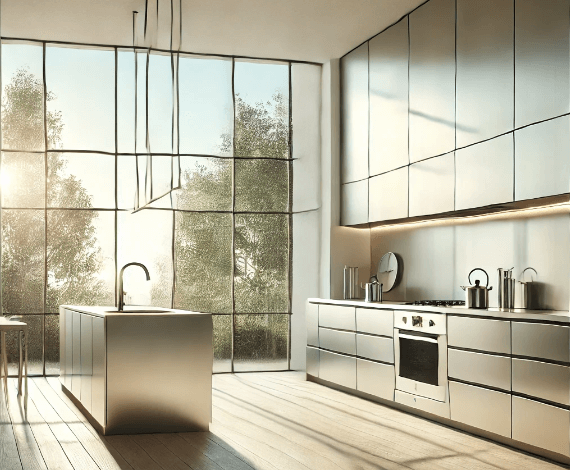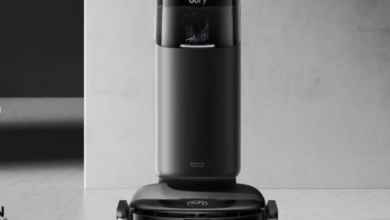The Pros and Cons of Stainless Steel Plumbing

Stainless steel plumbing has gained popularity in both residential and commercial settings, favored for its durability, aesthetic appeal, and excellent resistance to corrosion. These attributes make it a compelling choice for a wide range of plumbing applications, providing a blend of functionality and visual appeal that many other materials cannot match.
However, like any material, stainless steel also has its drawbacks, which include a higher cost and specific maintenance requirements. This exploration of the pros and cons of stainless steel plumbing aims to equip homeowners and construction professionals with the knowledge and data needed to make informed decisions tailored to address meet their specific needs and circumstances.
Durability and Longevity
Superior Strength and Resistance
Stainless steel is celebrated for its exceptional strength and durability, qualities that make it an ideal material for plumbing across a broad range of applications and industries. It can withstand extreme temperatures and pressures, which allows it to serve effectively in systems with varying water pressure demands, from high to low. This resilience ensures that stainless steel plumbing remains reliable, secure and efficient under diverse and demanding conditions.
The robust nature of stainless steel pipes means they are well-equipped to handle both high and low water pressure environments without compromising performance. Their ability to resist such extremes in temperature and pressure makes them versatile for any plumbing setup, ensuring longevity and minimal maintenance requirements. This makes stainless steel an excellent choice for those seeking durable and steadfast plumbing solutions.
Long Lifespan Reduces Replacement Costs
The longevity of stainless steel plumbing is one of its most significant advantages. These systems can last for decades without the need for replacement. This longevity can offset the initial higher costs associated with stainless steel plumbing installations.
Corrosion Resistance
Resistance to Rust and Corrosion
One of the standout advantages of stainless steel is its superior resistance to corrosion, setting it apart from traditional materials like iron and copper. This corrosion resistance alone is particularly valuable in environments where exposure to moisture and oxygen is inevitable, as stainless steel remains unaffected, maintaining its integrity over time. Its robust nature makes it a perfect choice for settings that are moist or have a high saline content, such as coastal areas.
Stainless steel’s ability to withstand the corrosive effects of water and oxygen ensures its durability and longevity in a variety of plumbing applications. This non-corrosive quality is especially beneficial in moist and saline environments, where other materials might deteriorate quickly. As such, stainless steel plumbing systems offer a reliable solution for maintaining long-term performance and structural integrity in challenging conditions.
Suitability for Various Water Types
Stainless steel is also corrosion resistant and to damage from a variety of water types, including hard and soft water. This makes it a versatile choice for different industries and geographical locations where water composition can vary significantly.
Aesthetic Appeal
Sleek and Modern Appearance
Stainless steel pipes are widely favored for their modern, sleek appearance, providing a visually appealing alternative to traditional plumbing materials. Their shiny and clean aesthetic enhances visible installations, making them a popular choice for areas like kitchens and bathrooms. In these spaces, the plumbing is not just functional but also forms an integral part of the interior design, contributing to the overall aesthetic of the room.
The contemporary look of stainless pipes and steel plumbing can elevate the design elements of any home or commercial space. This aesthetic advantage is particularly significant in installations where the pipes are exposed, allowing them to blend seamlessly with modern décor and fixtures. Stainless steel’s ability to combine functionality with style makes it a preferred option for design-conscious homeowners and designers alike.
Consistency in Appearance Over Time
Unlike other materials that might discolor or tarnish over time, stainless steel maintains its appearance, ensuring that exposed plumbing continues to look attractive years after installation.
Environmental Impact
Recyclability and Sustainability
Stainless steel is a recyclable material, making it a more sustainable option for plumbing. Its long lifespan and ability to be completely recycled at the end of its life help reduce environmental waste.
Energy Intensive Production
However, the production of stainless steel is energy-intensive, requiring a significant amount of resources and energy. This aspect somewhat diminishes its environmental benefits.
Cost Considerations
High Initial Cost
The primary drawback of using stainless steel fittings and plumbing is its cost. Stainless steel fittings, pipes and other products and fittings are generally more expensive than those made from other materials such as PVC or copper. This can be a significant barrier for some homeowners and builders.
Cost-Effectiveness Over Time
While the initial investment is higher, the durability and minimal maintenance and service needs of stainless steel can make it cost-effective over the long term. The infrequency of repairs and replacements required can lead to savings down the line.
Health and Safety
Lead-Free and Non-Toxic
Stainless steel is a safe material that does not leach chemicals into drinking water. It is free from lead and other hazardous elements, making it an excellent choice for transporting potable water.
Heat Resistance Enhances Safety
The material’s ability to withstand high temperatures also enhances safety in plumbing applications, reducing the risk of burns and other accidents associated with burst pipes.
Maintenance Needs
Low Maintenance Requirements
Stainless steel requires little maintenance due to its resistance to corrosion and staining. This can save homeowners time and money on upkeep.
Challenges with Water Spotting
Despite its corrosion resistance, top grade stainless steel can be prone to water spotting and fingerprint marks, especially in areas with hard water. Regular cleaning may be necessary to ensure it maintain its aesthetic appeal.
Installation and Compatibility
Ease of Installation
Stainless steel pipes are lightweight and easy to install compared to traditional pipe materials like galvanized steel. Their flexibility and adaptability make them suitable for fitting a variety of architectural styles and industrial applications.
Compatibility Issues
While stainless steel is compatible with most building materials, care must be taken when fitting and connecting pipes made from different materials to prevent electrochemical corrosion. Proper fittings and isolators should be used to ensure the stainless steel pipe fittings has longevity and functionality.
Conclusion
Stainless steel plumbing offers a blend of durability, aesthetic appeal, and environmental sustainability. However, the high initial cost and specific maintenance requirements should be considered. For those willing to invest in high-quality plumbing systems and equipment, stainless steel is an excellent choice that can provide both performance and style. By weighing these pros and cons, homeowners and professionals can make informed choices that suit and address their specific needs and budgets. For more information, contact Miami Stainless Australia.



